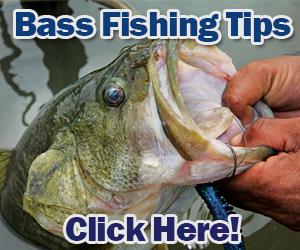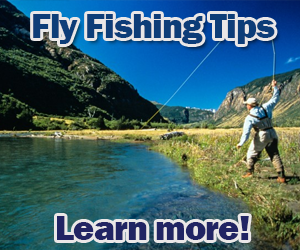Learn some Basic Guides on Fishing
As you spend more and more hours and days on bass fishing, you will acquire lots of knowledge about the right lure and technique for the proper way to do this sport. The best advice most experienced and seasoned bass fishermen, is to examine the fishing conditions, ask for tips from anglers familiar with the waters you are fishing in, and finally, try many different lures and bass-fishing techniques until you discover what works most effectively to the situation, and which one you are most comfortable with.
Here are some Guides to Bass Fishing to become a better Bass Fisher.
The Technique:
The bait must fall to the preferred depth, then you have to shake the rod tip. By this, you’ll be getting the fishes attention. Do this for at least 30 seconds, then shaking again for about 2 or 3 seconds intervals, stop and pull slowly about six inches. Then dropping again, slowly back and down and repeating the process. The first thing to remember if they’re not biting is to slow down.
Tips:
- During Springtime, fish uphill (position the boat in shallow water and cast to deep water) and use a 1/8 ounce weight.
- Fish downhill in Fall.
- Try to use a Texas rigged worm to prevent hang-ups.
- Fish out the worm and keep suspended 90% of the time.
- Always try to sharpen the hooks to make sure you have maximized your hookup percentage.
- When doodling, it is critical to keep your presentation natural by downsizing your hooks to 1/0 or lower, and paying delicate, attention to how straight your bait is in order to maintain a natural presentation.
- Crystal clear waters can be tough. The secret to fishing weenie worms is to keep slack on your line and shake the bait instead of dragging. The shaking of the rod and your light line gives your worm, grub or reaper an amazing action.
When to Go:
When the bass quit hitting during the daytime and when it becomes uncomfortably hot on the lake are good signals that it’s time to start night fishing. Night fishing is usually practiced when the water is in the mid-60s or warmer.
Places to Fish:
Where to fish at night is a question commonly asked by bass fishermen. Bass don’t move great distances in most situations. Smallmouth bass, especially, are proven stay-at-homes. As the summer wears on, the bass tend to move deeper and won’t come up shallow, even at night in many lakes. Night fishing is productive when the bass are within the 20-foot zone
Tips and Guides
- Position yourself only as far away as water clarity dictates; stay close enough for consistent accuracy.
- Try to make the lure land on the water with as little noise as possible. Cast past the target when possible.
- In windy weather, put tension on the line just before the lure touches down. This will straighten out the line and prevent it from blowing across obstructions.
- Learn casting techniques that permit a low trajectory, such as flipping, pitching, sidearm casting and underhand casting.
- Use a quality rod and reel matched to the weight of the lure. Rods with a stiff blank but relatively fast (limber) tip are easier to cast than extremely stiff or uniformly limber rods.
- Cast with the wrist, not the arm and shoulder.
- Lower the lure a few inches below the rod tip before casting; this gives extra momentum for the cast.
- Be sure to load the rod tip, causing it to bend backward, on the back-cast, then whip the rod forward smoothly.
- Fill the spool of any type reel to within 1/8 inch of the lip of the spool. DO NOT OVERFILL!
The Flip-Cast; use your wrist, NOT your arm.
- Concentrate on the spot you want to hit, not on what you want to miss.
- Use plenty of scent when trying to penetrate thick cover – it acts as a lubricant.
- Stick to basic jig colors (black/blue, brown/brown, black/chartreuse). Use a plastic worm with a glass bead between the worm and the weight for inactive fish.
- If you think it’s a strike, reel down until your rod is in a hookset position before you check. A strike is anything different (something you wouldn’t feel in a bathtub!).
- Tighten your drag all the way down for better hooksets.
- Use 17 to 25 pound test line for bait casting gear, 10 to 14 pound test on spinning (for flipping finesse baits).
In order to establish a pattern it is essential you understand how a bass lives in its environment. Knowing where the bass can be found at any given time or place is something you must develop. Always go fishing with a plan in mind.
Remember that every fish you catch can reveal clues on how to catch another. After establishing a pattern, realize that when the action slows down in the area you were fishing, you can then search for more areas that would fill the same criteria.





